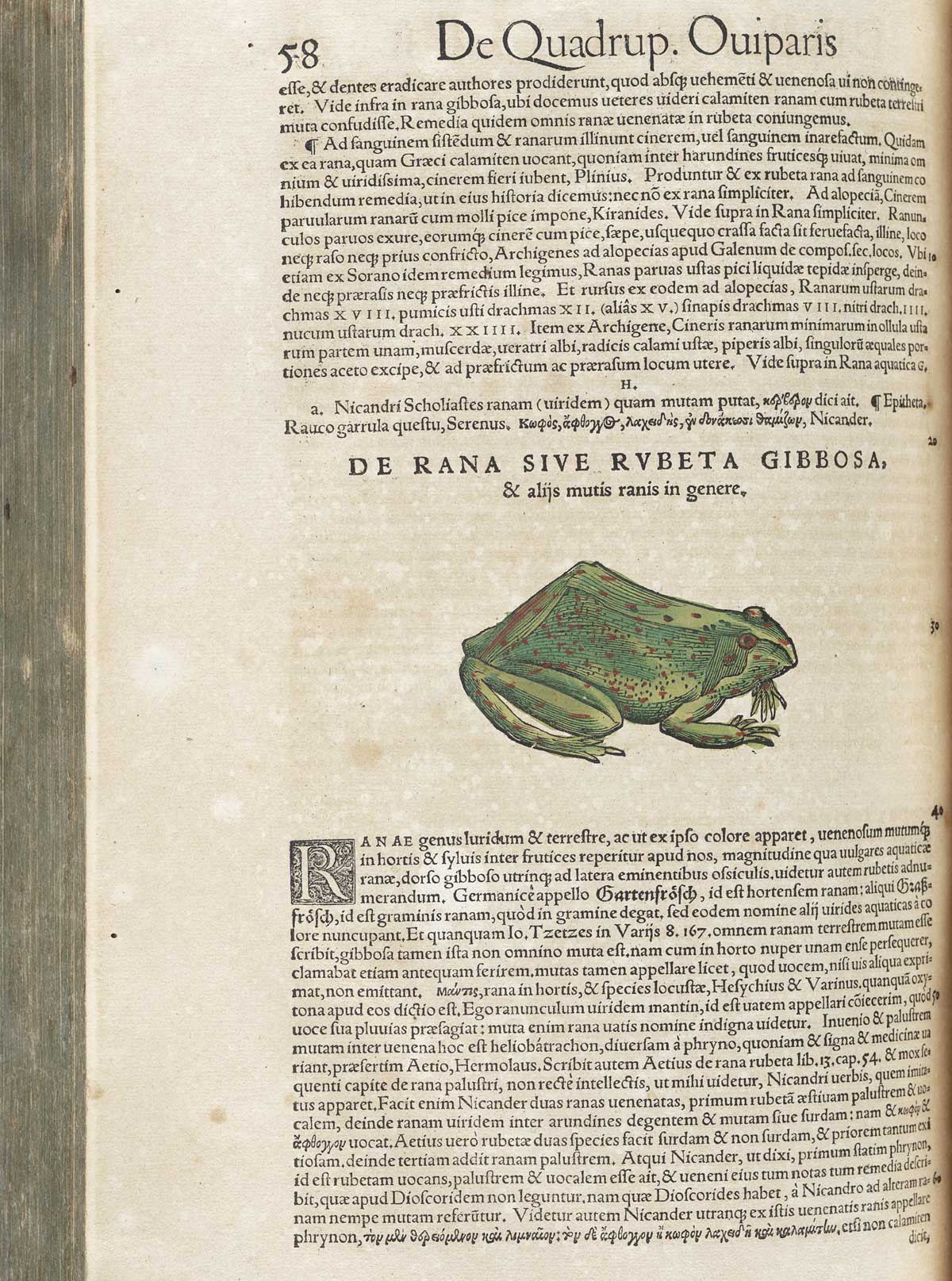Our frog-themed term began last night with a fantastic conversation about the metamorphoses of early modern natural historical culture. We focused on the relevant chapter from clergyman Edward Topsell's
History of Four-Footed Beasts and Serpents, originally published in 1607 and 1608, and over an hour and a half we explored frogness in its many manifestations, from supposed spontaneous generation to miraculous medicinal cures.
 |
| The frog in Conrad Gesner's Historiae animalium (published from 1551-87) |
As
Tillmann
explained in his very useful introduction, the work's early-seventeenth-century publication situates it between two traditions in
natural history: it appears on the verge of a shift away from
emblematic natural history
towards a natural theology
which focused on naturalistic detail and divine design more than
cultural significance. Topsell's text seems much more in this earlier,
multifaceted and emblematic style (as the author admitted, he has drawn
on many earlier sources, especially Conrad
Gesner); but with more naturalistic illustrations, and also an overarchingly theological interpretation, as would befit a man of God.
We went on to explore various themes and topics raised in the text, from Biblical plagues to magical applications and onomatopoeic poetry. Topsell, we saw, drew especially from ancient authorities, but in bringing together his text-based research he was not afraid to question their accuracy, and to deploy
more recent arguments where necessary. We wondered who would have bought and read this book, and why, whether seeking a comprehensive distilliation of known wisdom on the frog, an imaginative flight of fancy, or perhaps (and the index, as John pointed out, seemed to support this) medical advice on how to cure any manner of ailments.
All of these discussions were accompanied, of course, by suitable refreshments: a more modern emblem of 'frogness', Freddo.
 |
| Essential themed snacks. |

No comments:
Post a Comment